Assuming we can blow freely on the flute, the top octave is the most problematic in terms of intonation. Most of the notes are sharp at any dynamic level above mezzoforte, requiring headjoint adjustment and embouchure modification which will lower the blowing angle of the air column. A relaxed embouchure is crucial.
Certain notes tend to be so sharp that a modified fingering is often needed to play in tune. At the apex of the traditional range lies a real Olympian in the high pitch competition, the C7. Considered in the 19th century to be a nearly impossible extension of the instrument, many scale studies, including those of Marcel Moyse and Taffanel et Gaubert do not include it. However, composers seemed to have no problem embracing the high C, and it could be found in use across the mainstream repertoire by the early 20th century. Below is the standard fingering.
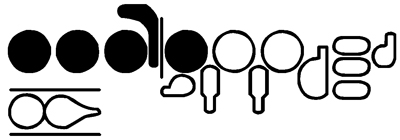
In his comprehensive compendium of flute fingerings, Alternative Fingerings for the Flute (2003), Nestor Herszbaum lists an astonishing 33 basic and modified fingerings for C7. It is ironic that in spite of the fact that there are probably more fingerings for this note than any other on the instrument, many players habitually cling to this standard default fingering which, even in the pianissimo range, is very sharp. I believe that players simply grow used to the sharpness and do not notice it after a while. Except for rudely awakening sleeping dogs, I cannot think of single use for the noise produced by this fingering.
While no high C fingering may be declared the best or easiest; with so many choices for playing this note, we need not strictly adhere to any particular fingering. Think of yourself as a master builder; each task has a specialized tool for the job. So it is in this case; having the right fingering for each situation makes you a master high C artist. In no particular order, here are just a few options with some practical applications.
B Trill Fingering
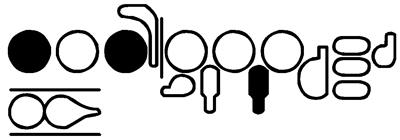
This fingering is what I call the B trill fingering. Think of it as high B without the left hand thumb key. It actually tends to be a bit flat if played with insufficient support. Useful for loud dynamics and notes of shorter duration, play it by rolling the flute out a fair amount (uncovering more of the blowhole), and blowing very hard. The embouchure should not be constricted. With practice, this fingering is quite useful. Use it at the top of a chromatic scale, such as this section in the Ibert Concerto.
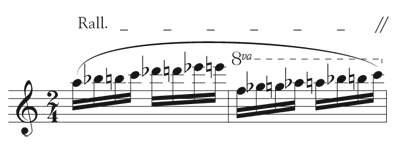
You also can make a passage a bit easier technically where arpeggios are concerned. Because of the scoring in the following passage from the Brahms Symphony #3, using the B trill fingering in measure 66 not only lowers the pitch of the C7, but is an easier fingering sequence in terms of coordination for the passage.
Brahms Sym. #3, Mvt. 1, m. 63-68
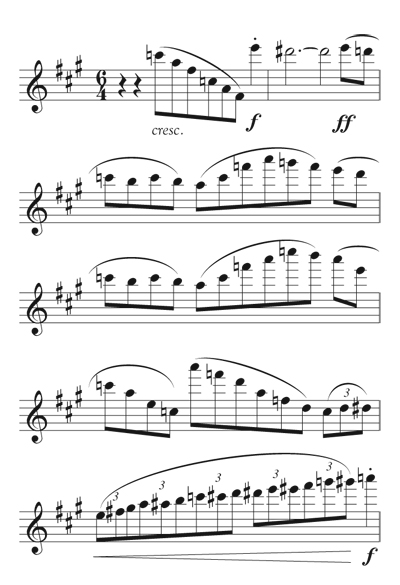
In the following example, avoid the usual embarrassment that occurs when ending on high C. This fingering is also technically easier.
Prokofiev Sonata for Flute and Piano, Scherzo
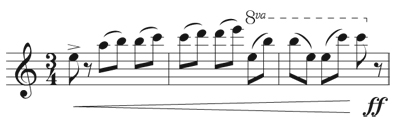
Loud staccato Cs have a strong tendency to be sharp, as in the following passage from Prokofiev’s Romeo and Juliet Suite, The Death of Tybalt. Here the B trill is the ideal choice. Note that the B trill fingering can be played just as well without the trill key.
Prokofiev’s Romeo and Juliet Suite
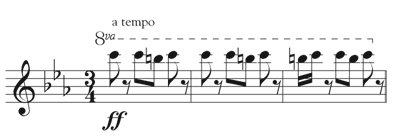
Long Fingering
Another very good fingering is what I refer to as the long fingering, because it utilizes nearly the whole tube.
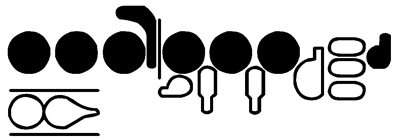
This fingering is a bit sharp, but has perhaps the best tone of all. Since it is not overly resistant, it can be played rather easily with vibrato, so use it for longer, singing notes. Technically, it can be somewhat cumbersome and takes some practice, but it is well worth the trouble. I have found that in orchestral works with passages where the flute is doubling the violins, it sounds particularly good.
Brahms Sym. #4, Mvt. 1, m. 412-418
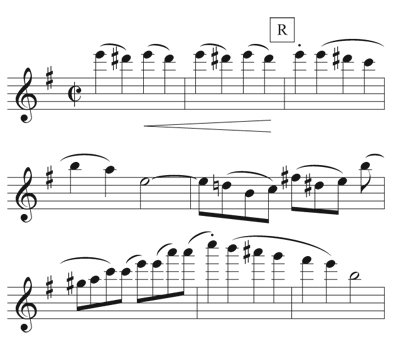
Tech Tip: Having played the E6 in m. 416 without the right hand pinky, simply play the next A using the gizmo. The pinky remains there for the C7. It takes some practice but soon becomes a natural decision. The same works well for singing the softer high Cs as in the Christopher Rouse Concerto.
C. Rouse Flute Concerto
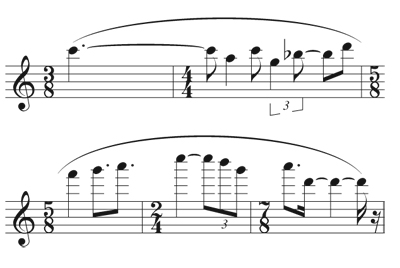
Keep the vibrato going on the C. Roll the flute slightly towards you to aid tone production within the soft dynamic.
Modified Long
Sometimes, use the long fingering without pressing the left-hand pinky down (G# key). This lowers the pitch a bit and is useful when trying match to the pitch on the piano, or approaching from G6, as in the following passage. Make sure to roll the flute outward and blow down, with plenty of support when playing this note.
H. Büsser, Prélude et Scherzo, op. 35
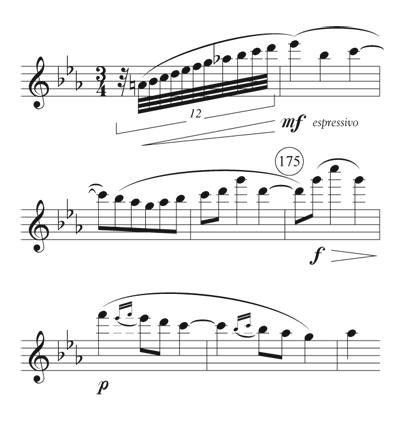
Simply remove the right-hand pinky on the preceding G and depress the gizmo on the C. If you are not sure about the intonation, do not worry; you will soon be checked for the accuracy of your pitch because the piano has a C at the top of the arpeggio in the following beat.
Modified Default
Try this modification of the default fingering.
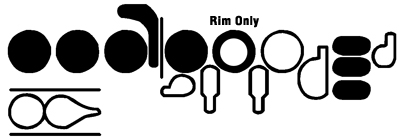
This fingering produces a very strong forte high C and is only very slightly sharp. Try it in the Dutilleux.
H. Dutilleux, Sonatine
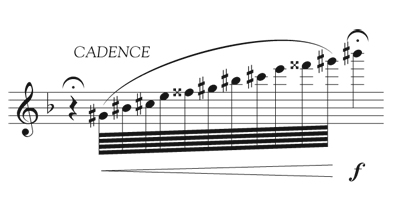
Tech Tip: Play the G# which precedes the top B# without the right hand pinky. You can also use this fingering with the right hand high C facilitator (gizmo) and it produces nearly the same result.
For cases in which the C7 is part of a diatonically ascending scale, use this modification:
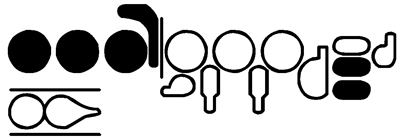
It can be very helpful to know that notes preceding the high C can often be played with the right hand pinky depressing the low C and C# keys. The following is a difficult and appropriate example:
Shostakovich, Sym. #10
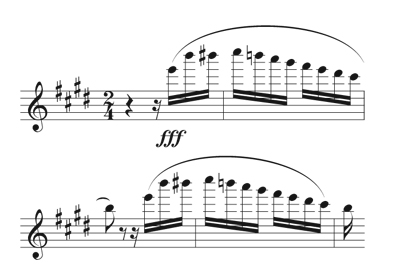
Tech tip: Playing the high C and the notes before it with footjoint keys activated allows not only for better intonation, but less technical fuss if ascending to high C# or D.
Roll Out
Even for advanced flutists, playing the C7 in tune can be difficult, especially when performing with other instruments. Even in a solo flute piece, the high C should be in tune with the rest of the instrument. Since flutes vary in intonation, find the fingerings that best suit your instrument. Contrary to what may seem natural, do not roll the flute in to play high C except to create an extreme soft dynamic. It is generally better to actually roll out and blow the air column further down. This allows for freer tone production, better tone quality, and when used with the right fingering, better intonation.






